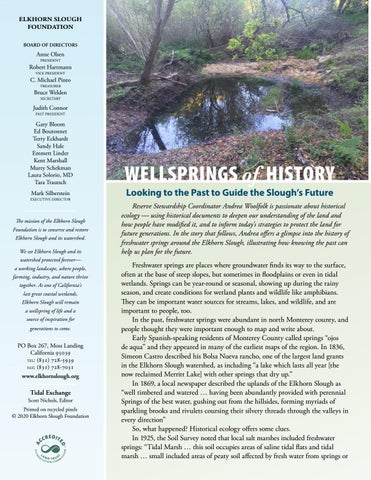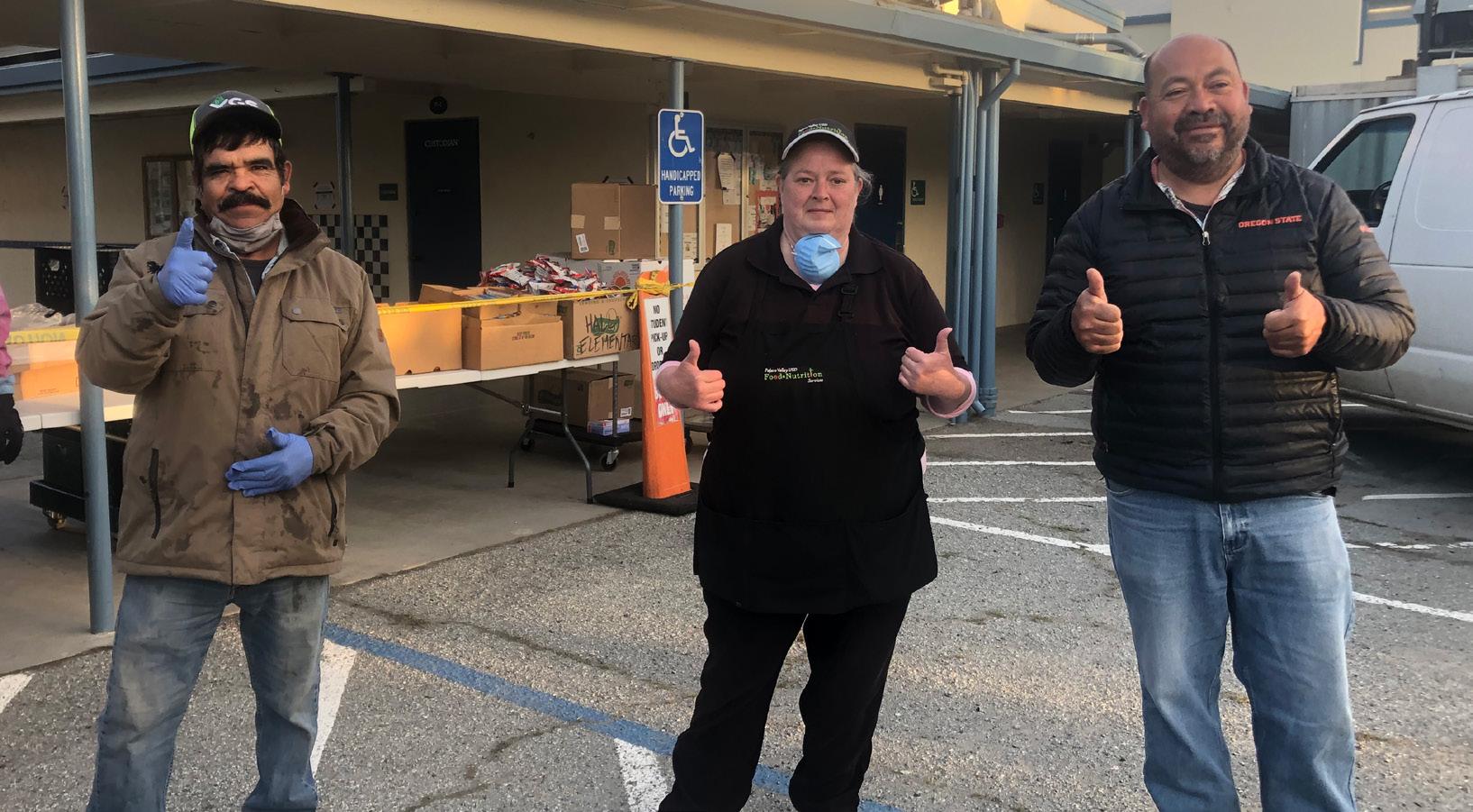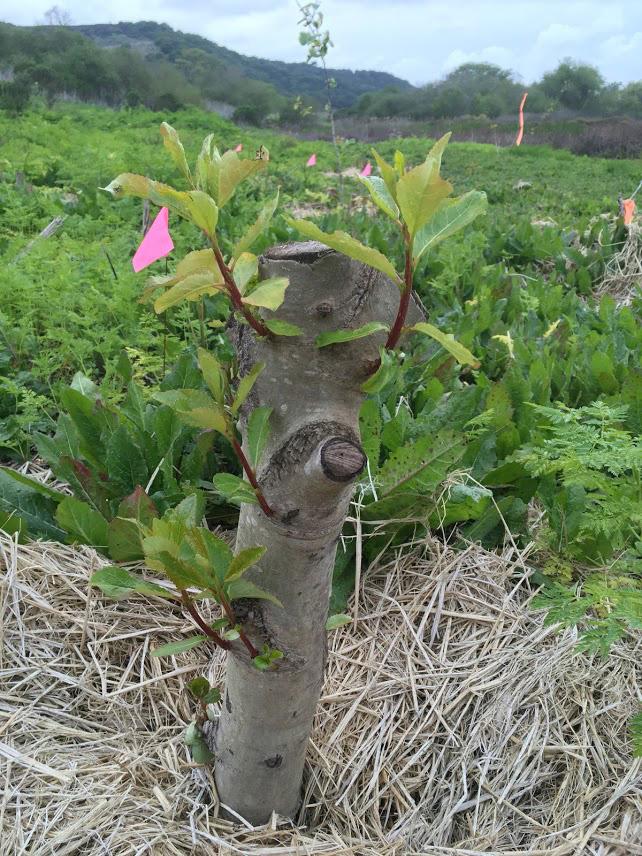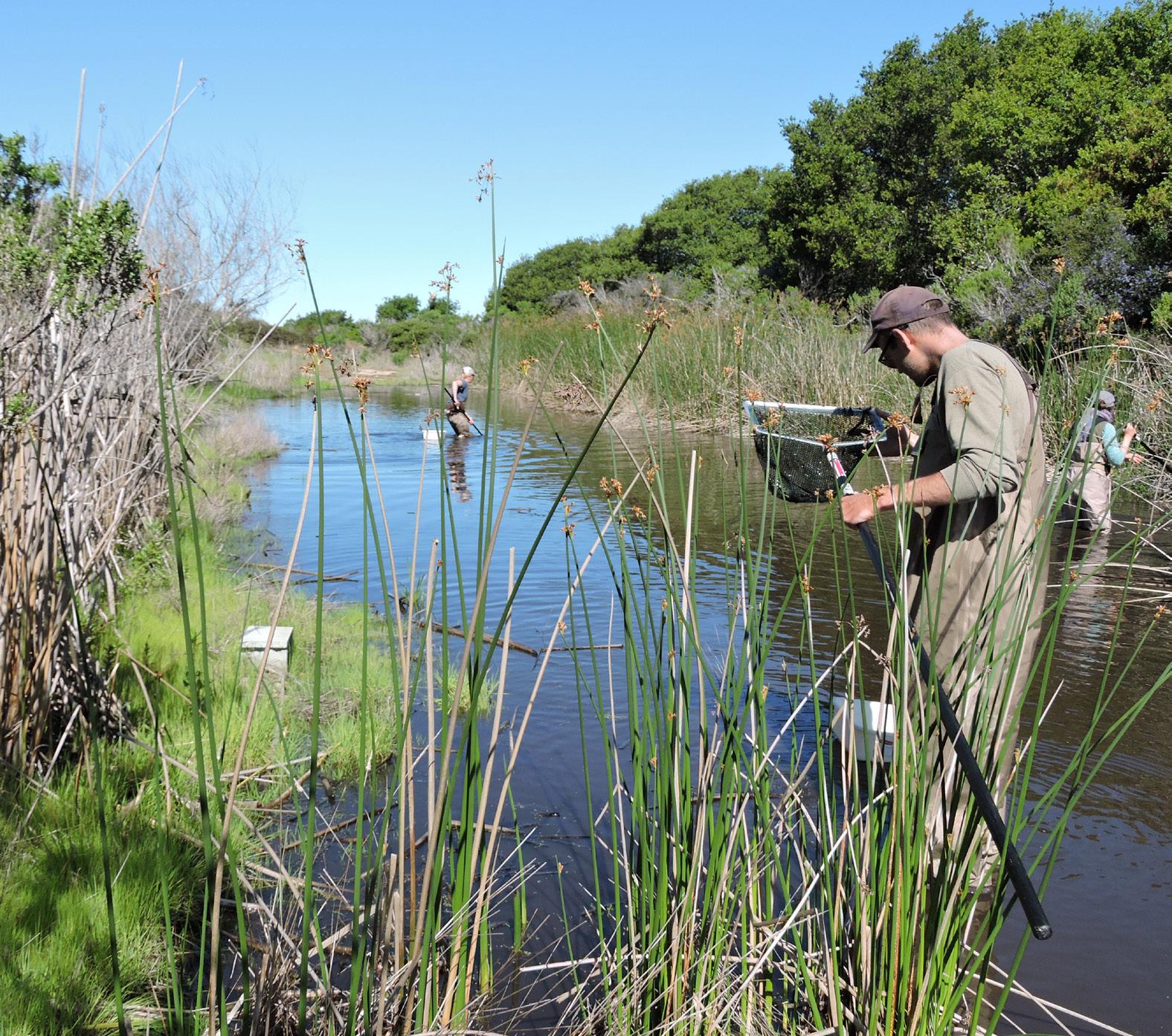ELKHORN SLOUGH FOUNDATION BOARD OF DIRECTORS
Anne Olsen PRESIDENT
Robert Hartmann VICE PRESIDENT
C. Michael Pinto TREASURER
Bruce Welden SECRETARY
Judith Connor PAST PRESIDENT
Gary Bloom Ed Boutonnet Terry Eckhardt Sandy Hale Emmett Linder Kent Marshall Murry Schekman Laura Solorio, MD Tara Trautsch Mark Silberstein
EXECUTIVE DIRECTOR
The mission of the Elkhorn Slough Foundation is to conserve and restore Elkhorn Slough and its watershed. We see Elkhorn Slough and its watershed protected forever— a working landscape, where people, farming, industry, and nature thrive together. As one of California’s last great coastal wetlands, Elkhorn Slough will remain a wellspring of life and a source of inspiration for generations to come.
PO Box 267, Moss Landing California 95039 TEL: (831) 728-5939 FAX: (831) 728-7031 www.elkhornslough.org
Tidal Exchange Scott Nichols, Editor Printed on recycled pixels © 2020 Elkhorn Slough Foundation
WELLSPRINGS of HISTORY Looking to the Past to Guide the Slough’s Future
Reserve Stewardship Coordinator Andrea Woolfolk is passionate about historical ecology — using historical documents to deepen our understanding of the land and how people have modified it, and to inform today’s strategies to protect the land for future generations. In the story that follows, Andrea offers a glimpse into the history of freshwater springs around the Elkhorn Slough, illustrating how knowing the past can help us plan for the future. Freshwater springs are places where groundwater finds its way to the surface, often at the base of steep slopes, but sometimes in floodplains or even in tidal wetlands. Springs can be year-round or seasonal, showing up during the rainy season, and create conditions for wetland plants and wildlife like amphibians. They can be important water sources for streams, lakes, and wildlife, and are important to people, too. In the past, freshwater springs were abundant in north Monterey county, and people thought they were important enough to map and write about. Early Spanish-speaking residents of Monterey County called springs “ojos de aqua” and they appeared in many of the earliest maps of the region. In 1836, Simeon Castro described his Bolsa Nueva rancho, one of the largest land grants in the Elkhorn Slough watershed, as including “a lake which lasts all year [the now reclaimed Merritt Lake] with other springs that dry up.” In 1869, a local newspaper described the uplands of the Elkhorn Slough as “well timbered and watered … having been abundantly provided with perennial Springs of the best water, gushing out from the hillsides, forming myriads of sparkling brooks and rivulets coursing their silvery threads through the valleys in every direction” So, what happened? Historical ecology offers some clues. In 1925, the Soil Survey noted that local salt marshes included freshwater springs: “Tidal Marsh … this soil occupies areas of saline tidal flats and tidal marsh … small included areas of peaty soil affected by fresh water from springs or






